Smart Trainers 2020: Rear-Wheel Trainers
For those of us in the Northern Hemisphere, the days are getting shorter and temperatures are getting cooler, which means that some of us may retreat back into the pain cave. Some of us never left. The smart trainer manufacturers made their presence known at Eurobike 2019 a couple of weeks ago, and we are going to take inventory of the smart trainers currently on the market (or coming very soon) to help you find the best option to enhance your indoor experience.
In this first installment, we are going to take a brief look at the rear-wheel smart trainer options. Consider this an inventory rather than a review of each trainer, and you can look forward to more content on direct-drive trainers, smart indoor bikes, and more soon.
For those looking for bang for the buck, rear-wheel trainers occupy the more affordable end of the smart trainer segment, with options ranging for as little as $300 to $750, with an average around $495. As the products continue to evolve, accuracies have improved to as much as +/- 1% and all of the trainers on this list have both Bluetooth and ANT+ connectivity, allowing for compatibility with a variety of software applications such as Zwift, Rouvy, TrainerRoad, The Sufferfest, FulGaz and more.
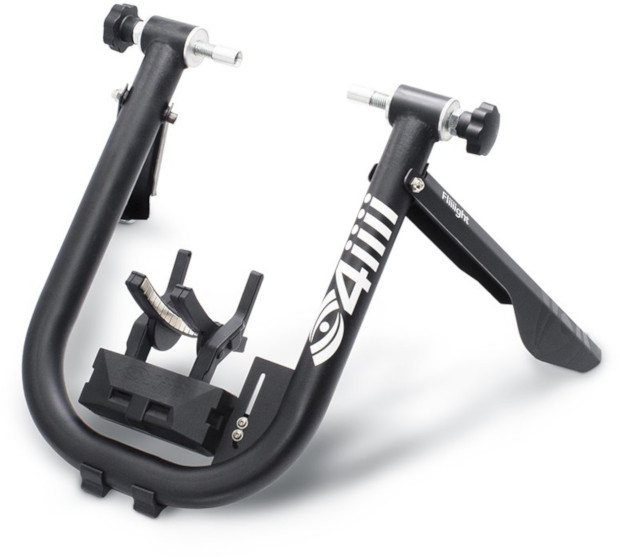
4iiii Fliiiight – $599.99
https://4iiii-innovations.myshopify.com/products/fliiiight-smart-trainer
We’re going to start this off with the newest and most unique product here – the 4iiii Fliiiight. Known for their power meter solutions, 4iiii is jumping into the trainer market with a trainer quite unlike anything else out there. The Fliiiight doesn’t actually touch your tire – instead, the resistance is generated using a pair of robotic magnetic arms. It’s probably best to just see it in action, and DC Rainmaker has a video that demonstrates the Fliiight a bit better than what we have room for here. The Fliiiight isn’t expected to land until October, but with a claimed accuracy of +/- 1%, up to 2200 watts of resistance (the most of any of the trainers listed here), no tire noise or wear, and a battery that allows you to be unplugged for up to 2 hours, this might be worth waiting for.
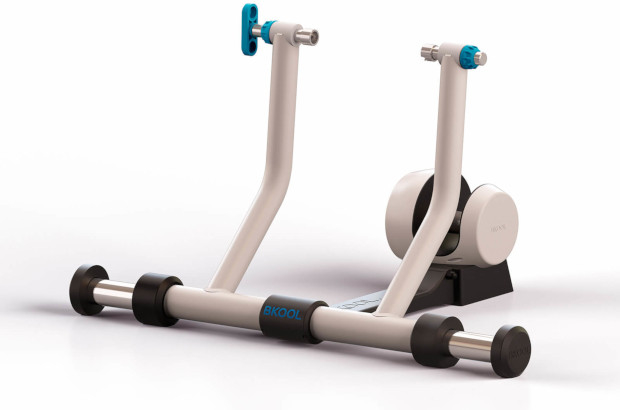
Bkool Smart GO – $299.99
https://store.bkool.com/en/179-bkool-smart-go-end-of-season-offer.html
Their website is somewhat light on details, but Bkool claims the Smart GO provides 800 watts of resistance with a maximum simulated grade of 8%. The claimed noise level is 75 decibels at 30 kph (18.6 mph). It weighs in at just under 10 kg, or about 21.8 lbs. The swing arm design allows for support of a wide range of tire sizes, and optional adapters support today’s common quick-release and thru-axle bikes. Bkool doesn’t state the accuracy or flywheel weight of the Smart GO, but at just under $300, this is the lowest-priced smart trainer on the market and will meet the needs of many riders looking to get a good workout.
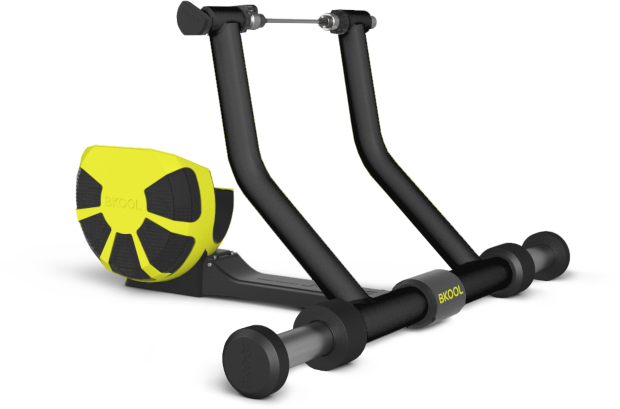
Bkool Smart Pro 2 – $449.99
https://store.bkool.com/en/180-bkool-smart-pro2-end-of-season-offer.html
Bkool’s Smart Pro 2 is similar in design to the Smart GO, but with some logical upgrades across the board. It provides up to 1200 watts of resistance with a maximum simulated grade of 8%, and does it a bit more quietly than the Smart GO with an advertised noise level of 60 decibels at 30 kph (18.6 mph).
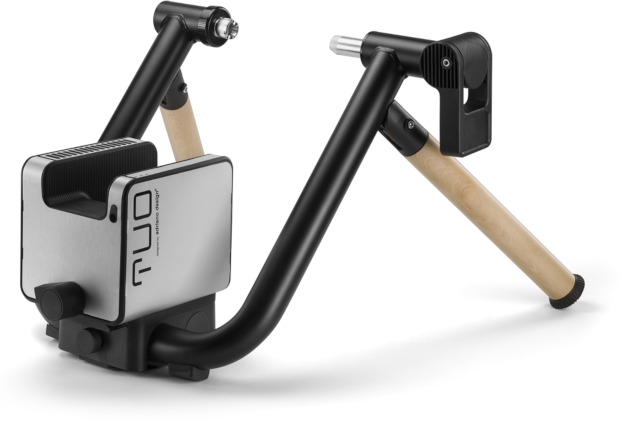
Elite Tuo – $499.99
https://www.elite-it.com/en/products/home-trainers/interactive-trainers/tuo
Elite has introduced the Tuo as their replacement for the Novo Smart, which is why you won’t see that unit listed here. The Tuo provides up to 1250 watts of resistance and a maximum simulated grade of 10%. The distinct design uses metal and beechwood will allow you to ride in style, whether you’re working out in your pain cave, living room, or at an IKEA.
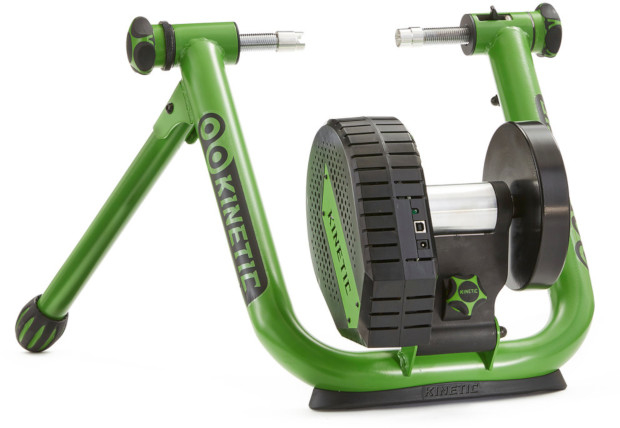
Kinetic Road Machine | Control – $569.00
https://www.kurtkinetic.com/trainers-products/road-machine-control
Kinetic’s Road Machine | Control is based on the venerable Road Machine frame, with the Control resistance unit being their second generation of smart resistance technology. The previous generation Smart Control resistance unit lacked ANT+ connectivity, opting instead for only Bluetooth and a USB port. The new Control unit brings ANT+ back into the picture, improving application compatibility. The Control resistance unit has a 12 pound flywheel for greater inertia to enhance the road-like feel of the electronically-controlled resistance. The Control resistance unit is rated at up to 1800 watts, which is the highest resistance of any of the rear-wheel trainers listed here. It offers a maximum grade of 10% and an accuracy of +/- 3%.

Kinetic Rock and Roll | Control – $749.00
https://www.kurtkinetic.com/trainers-products/rock-and-roll-control
The Kinetic Rock and Roll | Control uses the same Control resistance unit as the Road Machine, but with their Rock and Roll frame that allows the bike to move with you.
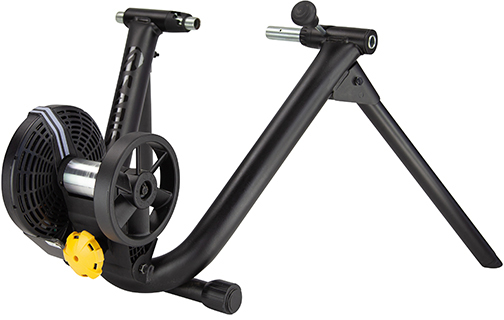
Saris M2 – $499.99
https://www.cycleops.com/product/m2
Saris has recently restructured their organization a bit, selling off PowerTap to SRAM, and now rebranding their CycleOps products to Saris. The M2 is unchanged, aside from the brand change. The M2 can provide up to 1500 watts of resistance and a maximum simulated grade of 15%, with an accurancy of +/- 5%. The M2 also claims to be quiet, at only 69 dB at 20 mph.
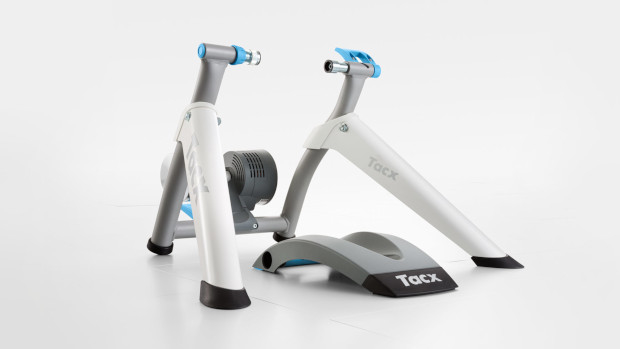
Tacx Flow – $369.00
https://tacx.com/product/flow-smart/
The rear-wheel options from Tacx occupy the more affordable end of the spectrum, and at $369, including the wheel riser, the Flow is a nice option for the budget-minded pain cave. Accuracy is rated at +/- 5%, with a maximum resistance of 800 watts and maximum simulated grade of 6%. Like all of the other trainers on this list, it supports both Bluetooth and ANT+ communications, so you can connect with a variety of applications. The included wheel riser fits together with the trainer to act as a carrying handle, in case you’re heading to a friend’s house for a trainer party.
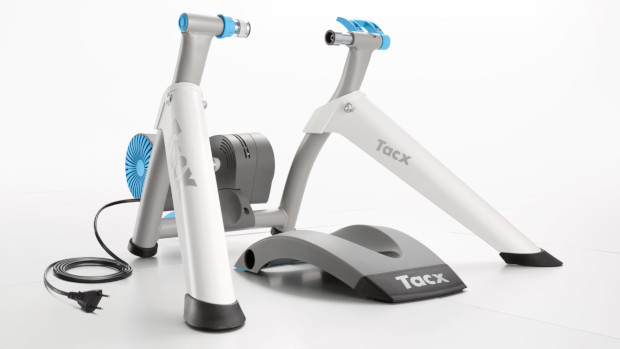
Tacx Vortex – $429.00
https://tacx.com/product/vortex-smart/
Price-wise, the Tacx Vortex comes in just a bit higher than the Flow at $429, and for the extra $60, you get 950 watts of resistance and a maximum simulated grade of 7%.
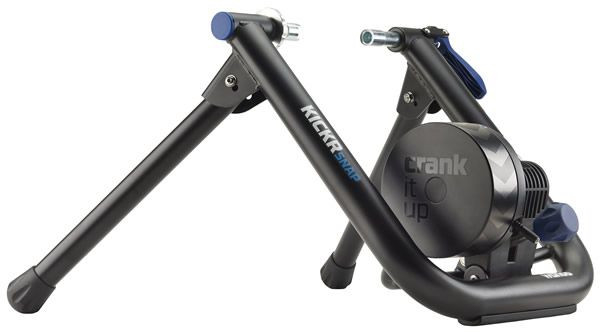
Wahoo KICKR SNAP – $499.00
https://www.wahoofitness.com/devices/bike-trainers/kickr-snap-bike-trainer
Last but not least is Wahoo’s KICKR SNAP. This second-generation of the SNAP was introduced in 2017 and saw a few nice updates and improvements over its predecessor, including compatibility with the KICKR CLIMB and HEADWIND. With a maximum resistance of 1500 watts, accuracy of +/- 3%, and maximum grade of 12%, the specifications are pretty solid all around.
Stacking Them Up
| Brand | Model | MSRP | Accuracy | Max Grade | Max Resistance |
|---|---|---|---|---|---|
| 4iiii | Fliiiight | $599.99 | +/- 1% | 7% | 2200 watts |
| Bkool | Smart GO | $299.99 | 8% | 800 watts | |
| Bkool | Smart Pro 2 | $449.99 | 20% | 1200 watts | |
| Elite | Tuo | $499.00 | +/-3% | 10% | 1250 watts |
| Kinetic | Road Machine | Control | $569.00 | +/- 3% | 10% | 1800 watts |
| Kinetic | Rock and Roll | Control | $749.00 | +/- 3% | 10% | 1800 watts |
| Saris | M2 | $499.99 | +/- 5% | 15% | 1500 watts |
| Tacx | Flow | $369.00 | +/- 5% | 6% | 800 watts |
| Tacx | Vortex | $429.00 | +/- 5% | 7% | 950 watts |
| Wahoo | KICKR SNAP | $499.99 | +/- 3% | 12% | 1500 watts |
Don't Forget Your Accessories
Due to space, we didn't talk much about skewers versus thru-axles, tire size compatibility, flywheel weights, or noise levels. You'll definitely want to look at the manufacturer's specifications on those details before you lay down your hard-earned cash.
Don't forget to budget for some accessories. If you have a disc brake bike, you'll need a thru-axle adapter, which is likely going to be an additional cost and specific to the brand of trainer you choose. While you're accessorizing, don't forget a front wheel riser. Some – like the Tacx Vortex and Flow – include a riser, while other brands might offer one separately or as part of a package deal.
Every one of these has both Bluetooth and ANT+ connectivity, allowing for greater connectivity with apps and hardware, whether you want to run Rouvy on your phone or Zwift on your laptop. Some of these do have built-in cadence and/or speed sensor, while others will rely on separate bits from Garmin, Wahoo, or others if you want that additional data.
Wrapping it Up
Rear-wheel trainers have come a long way in just a few short years, and the current batch of products all offer a lot of bang for the buck, especially when paired up with some of the entertaining and effective training apps on the market today. Stay tuned for the next installment, where we'll look at the direct-drive trainers out now.

